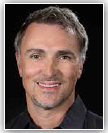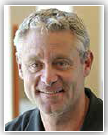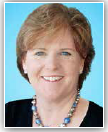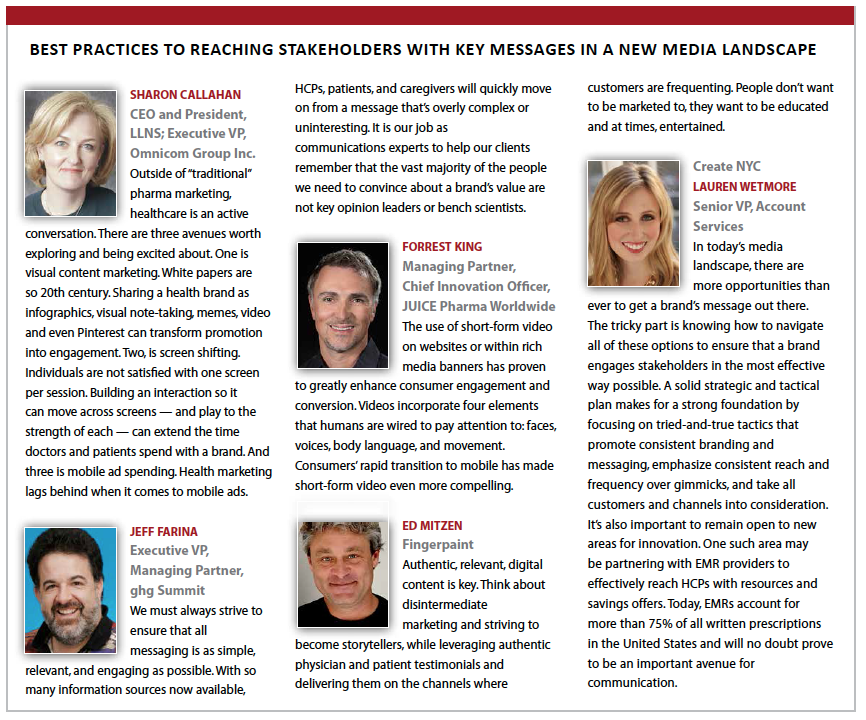 Ken Begasse
Ken Begasse
Founder and CEO
Concentric Health
Experience
Opportunities: Marketers need to move healthcare from a model of disruption to one of desire. Disruptive brand communications interrupt and irritate to gain awareness. But to make customers desire a brand and make them seek it out, we have to apply behavioral insights to understand customer needs and build engaging content that creates useful solutions. By solving their problems when they want, customers will reward brands with constant attention.
It may seem counterintuitive, but the current landscape with an ever-increasing number of media outlets does not correlate with a customer having less time and attention. It’s just more of the same — more outlets interrupting and deteriorating customer engagement with a brand. Many in our industry still measure each channel based upon awareness metrics, or metrics based on disruption. On the other hand, there is a significant opportunity ahead for desirable brands that know their customers’ needs and know within which channels to execute.
One new challenge born of this model is that we have to move as quickly as our customers. Shifting our focus to desire forces us to be innovative in how we apply our existing resources. The greatest opportunity lies in unleashing data and insights through an agile media strategy, at the speed at which customers move, to achieve true innovation.
Barriers: Simply, fear of failure is the biggest barrier. Nothing stifles innovative thinking, solutions, or actions more than fearing you’ll be judged a failure. Interestingly, when looking upon the most inspiring innovators of our time, one dominant theme emerges: every single one of them failed before succeeding. Yet, in our business climate, failure isn’t embraced but shunned. Therefore, marketers hold tightly to metrics that favor the known, already done-before and less innovative, and chiefly ROI.
Instead, a focus on return on engagement (ROE) will allow marketers to shape their brand experiences based on customer insights and strategic leaps of faith. ROE is indicative of brand strength based upon customer behavior and action, pillars for creating desirable brands. Successful or not, these actions constantly inform and create a continually innovative brand experience that solves problems, creates a desirable health experience, and even helps marketers fail comfortably in the process.
 Sharon Callahan
Sharon Callahan
CEO and President, LLNS; Executive VP,
Omnicom Group Inc.
Opportunities: There’s an old real estate adage that defines the three most important criteria as, “location, location, location." Today’s advertising opportunities are no different. But what gives them power isn’t a specific physical place. Rather, it’s the power of digital to identify an individual — and then deliver a custom message to them based on their time and place.
With ever-present smart devices — and soon-to-be-present wearables — the when and where of a doctor or a patient or a caregiver can become a key to customization. What is the mindset of the HCP in the office, versus on the road, or after hours at home? What kind of voice will have the most impact on a patient going into a healthy environment, such as a gym, versus an unhealthy one, such as a fast food restaurant? Rather than a one-size-fits-all messaging, a more meaningful brand story can — and must — be told.
Barriers: We simply must work harder and smarter to make data actionable. We collect tilts, steps, clicks, and taps at an astonishing rate. On the horizon, beats per minute, chemical levels, eye-tracking, and more. But what are we truly doing with it? The promise of closed-loop marketing holds undeniable promise. But for every full-circle solution of this kind, there are too many stories of collected information going into a virtual “shoe box" with no follow up. Every interaction — even largely unconscious ones — can be beneficial to testing creative and developing strategy.
 Forrest King
Forrest King
Managing Partner, Chief Innovation Officer
JUICE Pharma
Worldwide
Opportunities: For patients and caregivers, behavioral targeting technology is an affordable and automated way to boost the effectiveness of our communications, break through the clutter, and provide a personalized conversation. Once marketing automation software has identified a customer’s digital destinations, his or her interests can be identified and content in the form of targeted advertising or, where appropriate, native advertising placement can reach them with messages tailored for a good fit within the media.
For HCPs, one new channel that can be highly effective is the EHR platform. There are multiple EHR platforms that reach the HCP at the point of care and serve up messages regarding a drug or disease state; unbranded-to-branded messages are most effective. This business model is still emerging, so finding the point of integrated and truly helpful offerings is a potential tech-evolution of the EHR platforms.
Barriers: Although the situation is slowly improving, the inability to use social media effectively has caused pharma to be out of step with how and when consumers most readily receive marketing messages. Another challenge to innovation is pharma’s slow adoption of marketing automation and big data technology.
The final challenge to innovation faced by the industry is rapid change that causes a certain kind of paralysis within organizations acquiring institutional knowledge at a much slower rate than individuals.
 Ed Mitzen
Ed Mitzen
Fingerpaint
Opportunities: Big data, while an overused buzzword nowadays, represents enormous opportunities for innovation. It allows marketers and clients to make more informed decisions on the most effective ways to reach all customer groups. It also represents the best way to mine patient outcomes information to build a case for reimbursement to very skeptical payers.
The other area where big data will transform the industry is to allow for smarter cost-reduction decisions. Clearly, pharmaceutical companies are going to continue to cut costs, and rather than across the board marketing reductions, we will have better information on where to slash and where to double-down.
Barriers: Clients have to be willing to listen to their marketing partners that have experience in innovation, especially as it relates to digital. If your agency has a team of digital experts who came from American Express, Jet Blue, or Zappos, listen to them. Resist the temptation to do things as you have in the past. The days of untracked ROI, weak customer engagement, and cookie-cutter flat content are dead. The biggest challenge to innovation is old, tired thinking that stays the course because ‘that’s how we have always done it.’
 Lynn O’Connor Vos
Lynn O’Connor Vos
CEO
Grey Healthcare Group (ghg)
Opportunities: We are operating in a value-based world today. That means we need to go beyond product-centric to become customer-centric. Our marketing programs must be laser focused on the needs of providers and, most importantly, patients. We must be more responsive and find better ways to bring the value our industry has to offer to all of the stakeholders. Professional marketing will change dramatically over the next five years as EMRs and patient portals will become the platform for communicating to physicians and patients. In this dynamic value-based environment there is an urgent need to meet meaningful use criteria and improve outcomes. The healthcare team and their institutions need the industry’s help more than ever before. Compliance to medications is one of the key challenges to improving health outcomes and the industry has the skills and tools to help. Our mission is to make sure doctors have immediate access to our products and services at the point of care to drive better outcomes.
Barriers: We’re in a period of tremendous change where many of the tried-and-true methods of communicating to physicians and patients are no longer as relevant. The changing times require new thinking and strategies. It’s about developing new models and approaches to deliver value in an online setting — and that is mostly mobile. Also key is understanding the changing physicians’ workflow, as well as the motivations of providers and their institutions to deliver better outcomes. We must understand and meet those needs to provide healthier outcomes and business results. (PV)
~~~~~~~~~~~~~~~~~~~~~~~~~

Best Practices to Reaching Stakeholders with Key Messages in a New Media Landscape
Sharon Callahan
CEO and President, LLNS; Executive VP,
Omnicom Group Inc.
Outside of “traditional" pharma marketing, healthcare is an active conversation. There are three avenues worth exploring and being excited about. One is visual content marketing. White papers are so 20th century. Sharing a health brand as infographics, visual note-taking, memes, video and even Pinterest can transform promotion into engagement. Two, is screen shifting.
Individuals are not satisfied with one screen per session. Building an interaction so it can move across screens — and play to the strength of each — can extend the time doctors and patients spend with a brand. And three is mobile ad spending. Health marketing lags behind when it comes to mobile ads.
Jeff Farina
Executive VP,
Managing Partner,
ghg Summit
We must always strive to ensure that all messaging is as simple, relevant, and engaging as possible. With so many information sources now available, HCPs, patients, and caregivers will quickly move on from a message that’s overly complex or uninteresting. It is our job as communications experts to help our clients
remember that the vast majority of the people we need to convince about a brand’s value are not key opinion leaders or bench scientists.
Forrest King
Managing Partner,
Chief Innovation Officer,
JUICE Pharma Worldwide
The use of short-form video on websites or within rich media banners has proven to greatly enhance consumer engagement and conversion. Videos incorporate four elements that humans are wired to pay attention to: faces, voices, body language, and movement. Consumers’ rapid transition to mobile has made short-form video even more compelling.
Ed Mitzen
Fingerpaint
Authentic, relevant, digital content is key. Think about disintermediate marketing and striving to become storytellers, while leveraging authentic physician and patient testimonials and delivering them on the channels where customers are frequenting. People don’t want to be marketed to, they want to be educated and at times, entertained.
Create NYC
Lauren Wetmore
Senior VP, Account Services
In today’s media landscape, there are more opportunities than ever to get a brand’s message out there. The tricky part is knowing how to navigate all of these options to ensure that a brand engages stakeholders in the most effective way possible. A solid strategic and tactical plan makes for a strong foundation by
focusing on tried-and-true tactics that promote consistent branding and messaging, emphasize consistent reach and frequency over gimmicks, and take all
customers and channels into consideration. It’s also important to remain open to new areas for innovation. One such area may be partnering with EMR providers to effectively reach HCPs with resources and savings offers. Today, EMRs account for more than 75% of all written prescriptions in the United States and will no doubt prove to be an important avenue for communication.


















